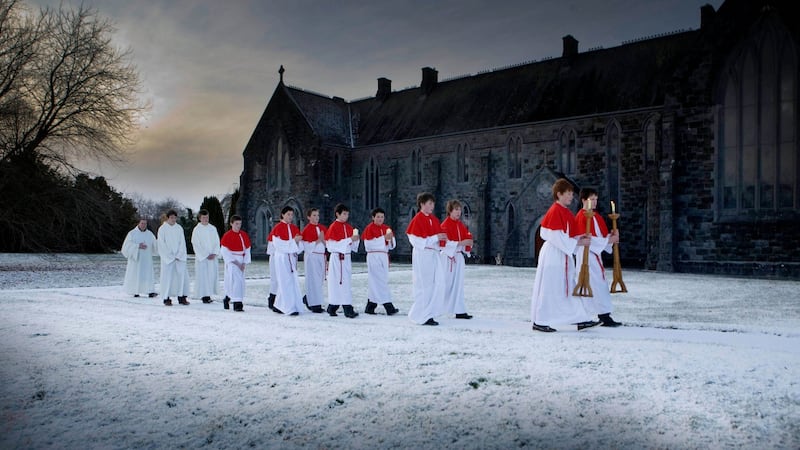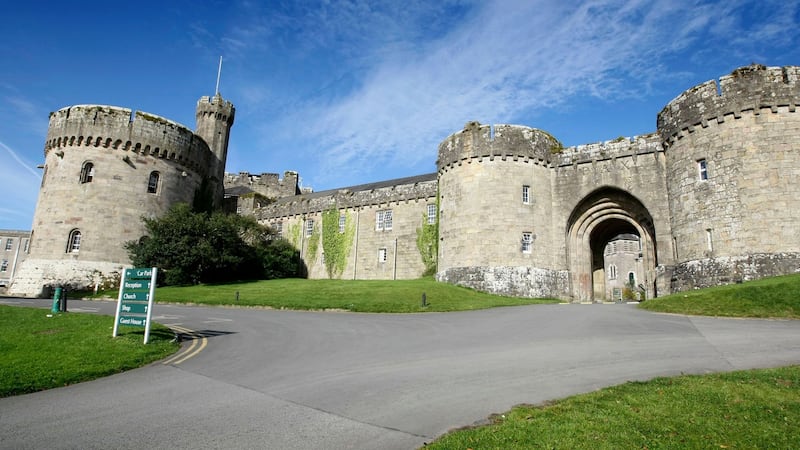When schools shut during the first lockdown in March 2020, they were catapulted into an experiment in remote learning on a massive scale. It was a daunting for most schools – but not all.
Barbara Ennis, the principal of Alexandra College in Milltown, Dublin 6, believes her school was "very lucky" thanks to its expenditure on technology and specialist teachers.
“We had invested a lot of money in our infrastructure, in our teacher training, and we also employ two incredible e-learning teachers,” says Ennis of the school, which charges fees of €7,685 a year.
“I think we must have been able to look into a crystal ball and predict this, because initially we closed on March 13th, and we were back teaching full-time, taking classes in our senior and junior schools, as well as our preschool on the Monday. And the feedback we’ve gotten from parents has been superb.”
The private or fee-charging sector has often prided itself on its facilities, heritage and history and – more quietly – the social leg-uppery that for so long has convinced parents to fork out on fees.
This year, however, the principals of fee-charging schools say a key differentiator during Covid-enforced disruption has been their ability to deliver quality teaching either online or in person.
Many invested in remote teaching and were well equipped with digital devices. Research indicate that fee-charging schools were also more likely than others to deliver live classes online, with higher engagement rates.
Revival
On the face of it, these seem like good times for the private school sector, which seems to be enjoying a mini-revival. While numbers slipped during the recession, resulting in some opting to enter the free education scheme, enrolments in the fee-paying sector are back at levels last seen during the economic boom.
Enrolments in fee-charging schools climbed to more than 26,200 this year, the highest number on record.

Latest admission statistics show most private schools – especially those in the Dublin area – are heavily oversubscribed and have long waiting lists for places.
This is despite rising fees across most of the State’s 51 private schools.
An Irish Times survey shows St Columba’s in Dublin remains the most expensive day school in the country, at €9,174 this year.
It is followed by Sutton Park, Dublin 13 (€7,995); Cistercian College in Roscrea Co Tipperary (€7,850); Alexandra College, Dublin 6 (€7,685), St Gerard's, Bray, Co Wicklow (€7,590) and the King's Hospital, Co Dublin (€7,550).
Among boarding schools, St Columba's is also the most expensive for seven-day boarding (up to €24,670);followed by Clongowes Wood College, Co Kildare (€20,800); Rathdown School, Glenageary (€20,600) and Blackrock College (€19,900).
Robust appearance
Despite the robust appearance of the sector, many private school principals are unhappy over the level of State funding provided for the sector and say discriminatory treatment is causing them real problems.
The fee-charting sector receives more than €100 million a year from the State in the form of salaries for teachers, special needs assistants and other grants.
However, the Joint Managerial Body (JMB), which represents voluntary secondary schools , says fee-charging schools receive proportionately less support than other “free” schools as a result of cost-cutting measures introduced during the last recession.
For example, fee-charging schools receive fewer State-funded teachers, reduced guidance and counselling allocations and are ineligible for a range of grants.
The basis for the difference in treatment is that private schools have access to financial reserves which other schools do not. However, principals of fee-charging schools say this is not necessarily the case.
“The idea is that we’re all rich and wealthy with huge cash reserves because most of us are located in Ross O’Carroll-Kelly land,” says one private school principal, who declined to be named.

“ The reality is that we’re struggling to hire additional teachers who we have to employ privately. Everything costs us more, because we don’t get the State support that schools in the free scheme do. Any money in the bank is being saved for badly needed capital investment, because we’re not entitled to those grants.”
The principal argues that fees charged for day pupils are cheaper than a full-time crèche, which can set parents back up to €12,000 a year.
“In some regards, we’re now being overtaken by the State sector. We used to be associated with better facilities and wider subject choice. I don’t think that is a given any more, by any means.”
Another principal says said the fee-charging school sector is getting a raw deal for historical reasons.
“We’re not private schools . We’re part of the State system of voluntary secondary schools. For historical reasons, we didn’t opt in to the free scheme. But now, we’re being treated as if we’re an embarrassment to the system. We’re being left out in the cold.”
Fee-charging schools, however, acknowledge that wider political support for their position is unlikely.
Opportunities
If there are challenges, most principals are happier to dwell on the opportunities.
While Covid-19 has posed a particular risk to boarding schools, many point to some unexpected benefits.
Edward Gash, principal of Midleton College in Co Cork, says there has been a strong sense of community at a time when society is adjusting to social distancing and isolation. He says the school had to make a number of physical changes such as introducing pods for boarders, isolation areas and reorganising classroom settings to allow for social distancing.
Unexpectedly, a large number of students ended up moving from attending the school as day pupils to boarding.
“There has certainly been an increase in the number of Irish students transferring to boarding, conscious of maximising their time in preparations for exams, looking for a more suitable environment to study in,” he says.
Gash has also noticed an increase in the number of international students seeking to enrol, which he believes may be related to Brexit as international students who would otherwise study in the UK are now turning to Irish schools.
Cistercian College in Roscrea, Co Tipperary, says it has put a large emphasis on wellbeing during the pandemic, encouraging students to voice their thoughts and concerns surrounding the pandemic and the effect it has had on them.
“We have invested heavily in the wellbeing aspect to ensure that we are providing a high standard of pastoral care for our boys, and giving them the opportunity to voice their concerns, and learn coping strategies and mechanisms,” says Gavin Clark, president at Cistercian College.
“And because this has been the most difficult time that we could ever imagine for young people, and some of the challenges that they’ve faced, we have to be aware of that. They need help in dealing with that.”
Clark believes that a boarding environment has helped foster a sense of community among students, at a time when wider society is coping with social distancing and isolation.
“A sense of community is really, really important for young people, to be surrounded by peers and to be part of a community that helps them to grow,” he says.
“A boarding environment enables that growth in all facets of life, whether that is academics, sporting, cultural pursuits, where we can help them find their passions, talent and interests.”



















